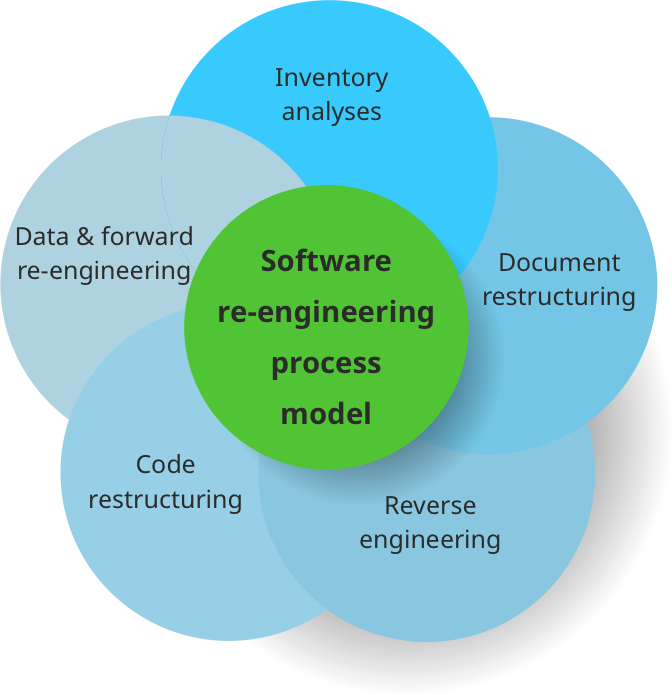Reengineering. Why does it matter?
Overview
Technologies are developing very fast but they are becoming obsolete even faster. That’s why quite often enterprises face a situation when their software that was built 5-6 years ago in strict accordance with their specific business needs turns into a slowly and poorly functioning system as well as the platform that was used for building this software itself. It is becoming more and more expensive to support this software while adding new functionality can become practically impossible.
An enterprise can’t continue working without its own information system but it is also practically impossible to work with the obsolete software. It is very difficult to make obsolete business apps compatible with new data formats, new operating systems, third-party software, and new business realities.
Here we can see the necessity to re-work the existing code and conduct reengineering.
This process allows us to detect useless consumption of the deployed resources and restrictions that act as barriers within the development process. All this will help to make the development easier, more cost-efficient, and convenient to support.
What is reengineering?
Reengineering is a process of studying and changing a system for rebuilding it in a new form with a view to improving its quality characteristics, and functionality, reducing maintenance costs, and minimizing risks that are crucial for a customer.
Along with conducting software reengineering, program data for the system can be re-projected as well. Reengineering can include the following tasks:
- Migration to a fresher version of the same programming language or to another language
- Reverse reengineering. It includes program analysis and getting data from it.
It helps to document the system’s organization and functionality.
- Program structure improvement. It includes program management structure analysis and changes introduction. It helps to make the structure easier for reading and understanding.
- Program modulation. This process presupposes that program parts are grouped together and some extra parts are deleted if it is necessary. In some cases, this stage can include architectural transformation.
- Data reengineering. At this stage, data that are processed by the program are changed to reflect the changes in the program.
Program reengineering does not always require the fulfillment of all the steps indicated in the scheme. Migration of the legacy code may be unnecessary if the programming language that is used for system development is still supported by the compiler provider. Data reengineering is required only if data structures in the program are changed during the system reengineering. But software reengineering always includes program restructuring.
How much does reengineering cost?
Reengineering costs greatly depend on the volumes of work that should be done. There are different approaches to reengineering.
Costs increase from left to right.
The key factors that can influence reengineering costs:
- Quality of the software that will be reengineered. The lower the quality of software and related documentation (if there is some) is, the higher reengineering costs will be.
- Tools that are available for reengineering. Usually, software reengineering is not cost-efficient if you can’t use CASE tools for automatization of the majority of changes in the program.
- The volumes of data transformation. If reengineering requires transforming huge volumes of data, it will significantly increase the cost of the process.
- Professional staff with the relevant knowledge. If developers who are responsible for system maintenance can’t participate in reengineering, it will increase the costs. Reengineering experts will spend too much time trying to understand the system on their own.
You can always contact the experts of our company who will conduct a professional audit of your software and will help you to find the right decision regarding the optimization of your system.
We can help to turn your obsolete product into a high-performing and convenient solution that will satisfy the current needs of your business.





